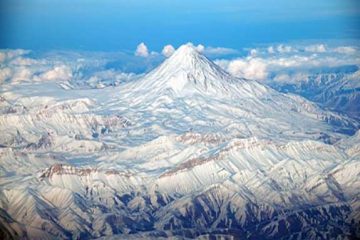Day 1: Arrival in Yerevan
Arrival at Zvartnots International airport at … Transfer to hotel and overnight.
Day 2: Yerevan city tour
After a late breakfast, meeting with the guide at the hall of the hotel. Departure for an entire day of visits of Yerevan starting from Victory Park, which houses the statue of Mayr Hayastan (Mother Armenia), to admire the best view of the city. Visit of Matenadaran, the museum-library, unique in the world, which houses a collection of thousands of manuscripts. Continuation to Cascade complex, a monumental staircase that houses the modern art collection of Gerard Cafesjian. Walk in the center of Yerevan to admire the Armenian Opera Square and continuation along Northern Avenue, Yerevan’s pedestrian street, to Republic Square, surrounded by the most beautiful buildings in the city, where Stalinist style meets Armenian architecture, and where the dancing fountains show takes place every evening in the summer. Visit of the Blue Mosque, built in 1765 in the times when Yerevan was a persian Khanate, and continuation to GUM Market, a must-visit destination for those seeking to immerse themselves in the local food scene and experience traditional Armenian hospitality. This market offers a wide variety of food items such as organic dairy products, fresh fruits and vegetables, spices, and sweets. Overnight in Yerevan.
Day 3: Yerevan– Echmiadzin – Zvartnots – Yerevan
After breakfast, departure to Echmiadzin, a city nicknamed the “Armenian Vatican” because it is the seat of the Catholicos of the Armenian Apostolic Church. Visit the Mayr Ator Cathedral, the oldest Christian cathedral in the world, and the church of Santa Hripsime, built on the tomb of the holy martyr. Both places are inscribed in the UNESCO World Heritage Site List. Continuation to the churches of Saint Gayane and Saint Hripsime, both included in the UNESCO World Heritage List. Visit of the ruins of Zvartnots Cathedral (UNESCO World Heritage Site), destroyed in the X century by an earthquake, famous for the fine bas-reliefs and built on a previous site from the Urartic era. Return to Yerevan and visit of the Memorial of the Armenian Genocide on the hill of Tzitzenakaberd (the Fortress of the Swallows), a complex dedicated to the 1.5 million Armenians who died at the hands of the Ottoman Turks in 1915. Overnight in Yerevan.
Day 4: Yerevan– Garni – Geghard – Noratus – Sevan – Tsaghkunq
After breakfast, departure to Kotayk region and arrival in the village of Garni, to visit the temple of Garni, a Hellenistic Roman temple from the I century AD and the only one to survive after the Christianization of Armenia in the IV century AD. Continuation of the journey to Geghard monastery (UNESCO World Heritage Site), located in a narrow gorge and partially carved into the rock. The name of the Monastery, Geghard, in Armenian language means “spear”, as the spear that pierced Christ’s side on the Cross was kept here for centuries. Short descent into the gorge of Garni, a deep canyon with walls covered by basaltic rock formations in the shape of organ pipes that have earned the name of this place of “Symphony of Stones”. Continuation to Lake Sevan, the “Emerald of Armenia”, one of the highest freshwater alpine lakes in the world. Stop in the village of Noratus to visit its monumental cemetery to admire more than 700 Khatchkar, the carved stones in form of a cross, typical of the Armenian art production. Visit of the Sevan peninsula, on which stands the Sevanavank Monastery, to admire the spectacular views of the lake and surrounding mountains. Overnight in Tsaghkunq.
Day 5: Tsaghkunq – Dilijan – Sanahin – Akhtala – Haghpat
After breakfast, departure to Dilijan, nicknamed “Switzerland of Armenia” for the lush forests that surround the town. Continuation to the Debed river valley, with its treasures of medieval religious architecture. Visit of the monastery of Sanahin, which has been included in the UNESCO World Heritage List, built in the X century and famous for its three-nave gavit and its Academy. Continuation to Haghpat Monastery (built in the X century and now a UNESCO heritage site), which was the most important spiritual center of Medieval Armenia in the XII century. Its university was very famous throughout the Armenian world and its school of copyists and miniaturists was among the most renowned in Armenia. Visit of the fortified church of Akhtala, built on a rocky spur surrounded by high and deep canyons, famous for being one of the few churches in Armenia with interior walls covered with frescoes counted among the best examples of Byzantine art outside the Empire of Byzantium. Overnight in Haghpat.
Day 6: Haghpat – Gyumri – Yerevan
After Breakfast, departure to Gyumri the second largest city in Armenia, located a short distance from the border with Turkey. Visit of the city, whose center revolves around Vardanants Square, overlooked by the Town Hall, the church of Yot Verk, which houses a venerated icon of the Holy Virgin with the seven wounds, and the church of the Holy Savior, today under reconstruction after the collapse which occurred following the devastating earthquake of 1988. In the square also converge the streets with the typical buildings of the old city, formerly known as Kumayri, characterized by beautiful black tuff architecture in Neoclassical and Art Nouveu Style dating back to the end of the nineteenth century. Overnight in Yerevan.
Day 7: Yerevan – Khor Virap – Areni-1 Cave – Noravank – Yerevan
After breakfast, departure towards south-east entering the Ararat Region to visit the monastery of Khor Virap, dominated by the snowy profile of Mount Ararat, in a suggestive position near the border with Turkey. In the fortified monastic complex, there is the well-prison (Khor Virap means “deep well”) in which in the fourth century St. Gregory the Illuminator was imprisoned for 13 years. Continuation to the wine region of Vayots Zor, whose landscape is characterized by jagged gorges and wild peaks. Visit of the archeological site of Areni-1, one of the most important sites in the world, where archeologists have discovered the most ancient wine cellar of the world, dating back to 6200 years ago. Visit of Noravank monastery, the masterpiece of the architect Momik, surrounded by rugged gray and red rocky mountains, with the two-storey church of Surp Astvatsatsin richly decorated with bas-reliefs. Return to Yerevan, farewell with the guide and overnight.
Day 8: Departure
Transfer to airport. End of services.






Tour Reviews
There are no reviews yet.
Leave a Review